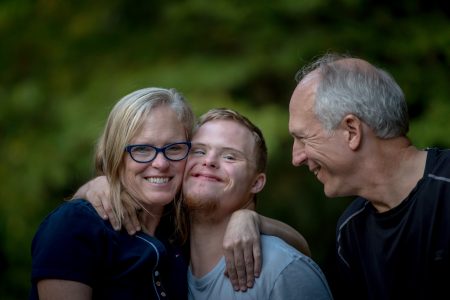The Metropolitan Transportation Authority (MTA) today released the final plan for the Bronx Bus Network Redesign that proposes two new local routes and one new express route, increases service frequency on nine corridors where multiple bus routes share streets, improves crosstown connections, balances stop spacing and streamlines circuitous routes to increase service reliability and intermodal transfers for 675,000 customers throughout the borough. The network redesign provides a new baseline upon which the MTA can make adjustments to tailor service to ridership while improving service for the majority of Bronx residents.
“The Bronx bus redesign gives us the opportunity to build a foundation for a new high-frequency network to serve the largest number of riders at the times when they need bus service the most,” said MTA NYC Transit President Andy Byford. “This is a customer-focused proposal that incorporates an unprecedented level of public input realized by finding innovative ways to reallocate and reinvest finite resources.”
“We are proposing a new Bronx bus network with higher frequency, more coverage and more points of transfer,” said Craig Cipriano, Acting MTA Bus Company President and Senior Vice President for Buses of NYC Transit. “This redesign is a dynamic customer-focused initiative that we will continue to refine as customers respond to changes.”
The proposed redesign updates the Bronx’s bus routes, which have largely remained unchanged since they were converted from trolley lines nearly a century ago or absorbed from private bus lines that were consolidated into the MTA decades ago. It took into consideration the routes’ performance, speed, ridership and reliability on key corridors, and how individual routes contribute to the larger network. Altogether, the proposal established a new baseline of bus service in the Bronx and a new foundation upon which the MTA can build as the borough continues to evolve and change. Once the redesign is implemented, the MTA will closely monitor service to ensure new levels are closely aligned with ridership and customer demand.
The recommendations were developed in collaboration with NYCDOT following unprecedented levels of public outreach with communities and coordination with transit advocates, including open houses, workshops, multiple community board meetings, in-person surveys, and community events. Proposals took into consideration customers’ current commuting patterns and itinerary suggestions, and requests for more direct service, fewer bus stops and improved crosstown connections. NYC Transit also identified key corridors where NYCDOT street treatments and traffic signal improvements can be implemented to expand bus priority and better support sustainable, all-day bus service.
“DOT is excited to join our partners at New York City Transit in this generational redesign of the Bronx’s bus network, especially in neighborhoods with limited subway access,” said NYC DOT Commissioner Polly Trottenberg. “As part of this effort, DOT has identified 10 major Bronx corridors where we will install bus lanes or other bus priority treatments to reduce travel times and improve reliability for bus riders. We look forward to working with NYCT and local stakeholders on these ambitious plans to better serve the bus riders of the Bronx.”
HIGHLIGHTS
- New service: Two new local routes, the Bx25 and M125, provide new connections and service to previously underserved neighborhoods. A new Manhattan-Bronx express route, BxM5, provides peak-hour premium service between northern Bronx and midtown Manhattan.
- More transfer points, frequency increase on major corridors: The majority of customers who provided feedback wanted better connections to other buses or the subway system. The proposal aligns routes to provide new access points for customers, including extensions of three routes to more neighborhoods, a new Bx40/42 connection to subway service at E 180 St, a new route connecting northern Co-op City to Bedford Park, and seven route simplifications to bring customers to major corridors. Four routes will provide service to accessible subway stations. Frequency also will significantly increase on nine major corridors, which will be served by 10 routes.
- Balanced stop spacing: Both customers and transit advocates requested more balanced spacing between stops to speed up travel times. The average time it takes for a bus to re-enter traffic from a stop ranges from 20 seconds to more than 1 minute during peak hours. Bronx stops are currently an average of 882 feet apart – just over three city blocks. Stops in transit systems around the world range from 1,000 to 1,680 feet. Under the proposed redesign, stops would be spaced an average of 1,092 feet, resulting in a net reduction of 400 local/limited stops. While transit advocates had requested more aggressive stop reductions, NYC Transit must consider other factors such as stop usage, ridership, geography and impact to the community when making these operational decisions. Many retained stops serve high ridership areas such as retirement communities, hospitals or schools for which a stop removal would create a significant burden. Others provide transfers to subway stations or connections to different bus routes, or access to geographically challenging locations where hills would make walking difficult, particularly during inclement weather.
- Proposals aligned with extensive Co-op City community feedback led to enhancements and retained loop routing to preserve area service and frequency. Bx26 frequency will be split with new route Bx25, with current frequency levels maintained along Allerton Avenue. The Bx26 route will maintain its existing routing due to public recommendations.
- Improved crosstown service in central Bronx, which was the result of popular customer feedback. Three routes will receive more frequent service. Seven routes will be streamlined, rerouted to reduce duplicative service and to provide more direct service to subway stations, or extended to new coverage areas.
- Select Bus Service (SBS) improvements and planning for the future: The Bx6 SBS route will be streamlined and extended to bring SBS further east along Story Avenue into the Soundview section of the Bronx. SBS, which is New York City’s version of Bus Rapid Transit, has proven to increase bus speeds by up to 20 percent while introducing customer-friendly features such as all-door boarding, off-board fare collection, improved signage and digital travel information. Approximately 9,400 current Bx5 customers will benefit from this extended Bx6 SBS route, which will also provide more direct access to major destinations and transfer points such as Yankee Stadium, the Bronx Courthouse, Borough Hall, and the Grand Concourse. The route will also serve upcoming developments such as the planned Hunts Point station for Metro-North Railroad, and a future residential development at 1125 Whitlock Avenue.
- Two express bus route changes to avoid congested streets: The BxM2 and BxM18, which travel on two of the city’s most congested north-south corridors, Madison and Fifth avenues, will be rerouted to the Henry Hudson Pkwy from Riverside Drive to Midtown Manhattan. These changes to avoid East Side street congestion will provide customers with faster and more reliable service, and Manhattan East customers will continue to be served by that area’s existing robust network of local bus routes and subway service.
- In collaboration with NYCDOT, NYC Transit identified major corridors for bus priority projects to accompany the network redesign. These corridors were chosen based on criteria such as ridership demand, service reliability and speed, proposed new service levels, demographics and ease of implementation. NYCDOT will work with communities to refine details of these projects over the winter, in order to start implementing these projects in 2020, along with benches, real time information signs, and other passenger-focused improvements. The identified corridors are:
- Pelham Parkway, Fordham Road, and West 207th Street, Eastchester Road to Broadway
- Pelham Bay Park Station Area
- Washington Bridge and West 181st Street, University Avenue to Broadway
- East 149th Street, River Avenue to Southern Boulevard
- L. Grant Highway, Cross Bronx Expressway to East 167th Street
- University Avenue, Kingsbridge Road to Cross Bronx Expressway
- Tremont Avenue, Sedgwick Avenue to Boston Road
- East 167th and East 168th streets, Jerome to Franklin avenues
- Story Avenue, Bronx River Avenue to White Plains Road
- East Gun Hill Road, Bainbridge to Bartow avenues
- Transit signal priority (TSP) and digital travel information: NYC Transit and NYCDOT will continue to explore opportunities to install TSP at intersections and real-time passenger information (RTPI) signage at stops. NYC Transit will install TSP software on the entire fleet by 2021, and NYCDOT has implemented TSP on 14 bus routes citywide, with the goal of adding an additional three to four routes this year.
Background
Under the Fast Forward plan to improve bus service, NYC Transit is redesigning the bus networks in every borough of New York City, starting with the Staten Island Express Bus Redesign that was implemented in August 2018, resulting in faster bus speeds, better reliability, and hundreds more trips during each week. The Bronx is the first borough to undergo a redesign of both the local and express routes at the same time. The MTA used customer feedback, traffic data and analyses, on-the-ground information from employees, and collaboration with NYCDOT and NYPD to find ways to shorten bus travel times, increasing reliability and frequency for the largest number of customers. Redesigns of the Queens and Brooklyn local and express bus networks are also underway.
NEXT STEPS
NYC Transit conducted extensive public outreach, hosting two Fast Forward Community Conversations, six workshops, nine open houses and 13 on-street outreach events at key bus locations in the Bronx and Upper Manhattan, 11 presentations to community boards in the Bronx and Manhattan, 64 social media posts, and digital signage at 200 subway stations systemwide. Public outreach will continue for the final redesign proposal, including community board presentations, informational sessions, open houses and a public hearing. The MTA Board will vote on a plan before any changes are implemented in mid-2020. A schedule of public outreach events will be announced at a later time, including a first-ever virtual open house providing information on the final plan for members of the public who are unable to attend an event in person. Questions for the virtual open house can be submitted online at new.mta.info/bronxbusredesign or on Twitter using the hashtag #bronxbusredesign.
Learn More
All public reports and presentations generated during the redesign process are Published online on a dedicated project website, which includes information on the Bronx bus network redesign, route-by-route proposals, and a trip planning tool with proposed changes and schedules. Learn about the redesign at new.mta.info/bronxbusredesign.
Bronx Borough President Ruben Diaz Jr. said: “The Bronx Bus Network Redesign is an upgrade that is long overdue. My office has been involved in the development of this plan from the very beginning to ensure that it meets the changing needs of our borough. Throughout this process, we have engaged stakeholders, elected officials, advocates and the community as a whole to examine the plan, make suggestions and adjustments, and update the Bronx bus map to better serve today’s commuters. The end result of this important process is a huge step forward in modernizing and upgrading the system for the hundreds of thousands of riders who rely on city buses every day. Thank you to Andy Byford and the Metropolitan Transportation Authority for their partnership throughout this process, and for the work that you are doing to prepare our borough’s critical bus infrastructure for the future. I look forward to continuing to work together with Mr. Byford and his team as this bus plan is rolled out to the public.”
State Sen. Alessandra Biaggi said: “The most important piece of the Bronx Bus Redesign process is the inclusion of community voices, and it is clear that the current plan is reflective of the many needs and concerns voiced by Bronx residents in my district. I look forward to seeing the MTA New York City Transit continue to engage with transit advocates and Bronx bus riders on how to build a better bus system in District 34, and further invest in public transportation access across the borough.”
State Assemblywoman Nathalia Fernandez said: “The Bronx bus redesign will hopefully bring better, more efficient service to the Bronx, a borough that predominant relies on bus transportation. This plan will address many gripes and concerns of the community, and I am looking forward to seeing it implemented.”
State Assemblyman Jeffrey Dinowitz said: “The most important aspect of any government endeavor to make positive changes in people’s lives and to have an open, transparent, and collaborative process throughout. I am encouraged by the significant increase in outreach events that went into the Bronx Bus Network Redesign, and I look forward to a continued dialogue with the MTA and NYCT about improving bus service for tens of thousands of riders in my district and 2 million riders citywide.”
Councilmember Vanessa L. Gibson said: “I am pleased that the New York City Transit, under the leadership of President Byford and his team, listened to our concerns regarding the Draft Bronx Bus Network Redesign Plan, and how it was insufficient to meet the needs of Bronxites. This Final Plan truly encompasses the communities’ input for increased bus frequencies, faster and extended routes, and route consolidations. I am particularly pleased to see an extension to the Bx18 in Morris Heights and expanded routes to the BX11 in Highbridge. These efforts lead to an increase in accessing jobs and economic opportunities, and is a creative way to increase bus ridership while speeding up bus times for Bronxites. We are eager to read the plan in full detail once its released and we are sure residents will be excited for the changes to come.”
Councilman Mark Gjonaj said: “I want to thank Andy Byford and the MTA for engaging the community and considering local input throughout the planning process of the Bronx Bus Redesign. I truly appreciate the collaborative effort and commitment to ensuring that the redesign reflects the needs and concerns of our residents.”
Assembly Member Marcos A. Crespo said: “The Bronx Bus Redesign process has allowed Bronx residents to significantly impact the decision making process and set up increased efficiencies throughout our boroughs bus routes and service. My district in particular will see a tremendous benefit with the expansion of the Bx6 SBS along Story Avenue. I am grateful to all the residents who joined me in voicing concerns and achieving the restoration of the Evergreen/Elder bus stop along the 5 bus line. This overall plan is a major step forward for The Bronx, and I applaud the efforts of Andy Byford, the MTA redesign team, Borough President Ruben Diaz Jr., community activists and every resident who participated in this very important endeavor. Better bus service is crucial to serve our communities and this plan will achieve that.”
.









